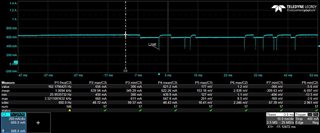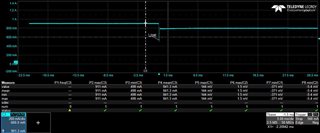Other Parts Discussed in Thread: TPS1H100-Q1
Hello,
I was evaluating TPS1H100-Q1 MOSFET for my design with evaluation module.
For my requirement, I need Internal current limit to be set at 900mA. MOSFET should be used as current limit element connected in series on supply line.
with the calculations provided in user guide, I set the value of R7 pot in evaluation module to 2.740K.
with this when I measured the results I observed that,
When I linearly decrease the load resistance, the current goes till ~1000mA limit then reduces to 900 mA. (I do not understand this behavior why it is increased by 100mA above the set limit? Is there any hysteresis?)
if I further reduce the load, it tries to keep the load current to 900mA limit till overload current reaches ~1350mA (1.5 times of set current limit, as specified in datasheet also).after that load current drops to value of ~200mA reducing the output voltage further.
Please let me know if the clarification for the above query marked in red and the solution for the same.
Let me know if you need any additional info.




